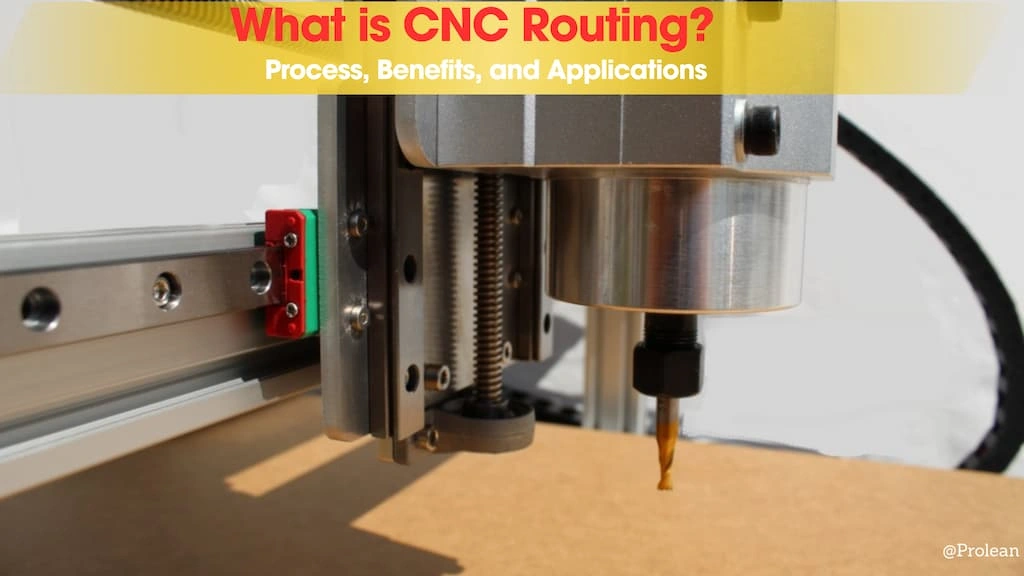
What is CNC routing
CNC machining has several types of processes, including routing, milling, and turning. CNC routing is a type of machining process used for cutting, engraving, drilling, and shaping soft materials.
A CNC router carves and shapes materials such as wood, plastics, foam, aluminum, brass, and a few other soft metals. However, it has limited axes of movement and tool reach compared to CNC milling machines.
Let’s discuss the CNC routing process, its advantages & applications, tooling, types of routers, and how routing differs from milling.
What is CNC Routing?
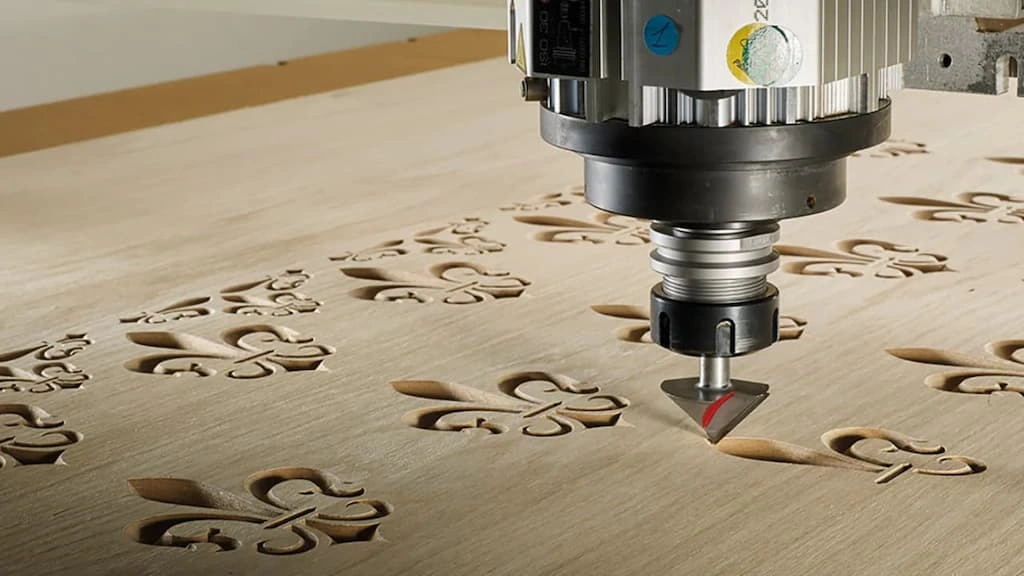
CNC routing process
It is a machining process guided by CNC instructions, which cuts, shapes, and carves the intricate designs into the material. Like all other CNC processes, a 2D or 3D CAD design is used as a blueprint for the process.
Routing manufacturing is performed on a CNC router machine, which includes a large work bed and rotating router bits to shape the material. This allows for the processing of thin and large-sized material sheets.
Unlike higher axes CNC milling, CNC routing typically involves 3 axes or 5 axes movement. Therefore, it has a limited capability of creating complex shapes. However, it outperforms milling and turning when it comes to engraving complex and large patterns.
Stages/Steps of the CNC Routing Process
To understand how a CNC router works, let’s look at the routing steps like design creation, CNC programming, router Setup & positioning, machining process, and post-processing.
Design Creation
First, a detailed 2D and 3D design of the desired component is made, outlining dimensions, features, and other characteristics. While designing, it is essential to consider the complexity and manufacturability.
You can use AutoCAD, Solidworks, CATIA, or other relevant computer-aided design software to prepare the 3D model.
CNC Programming
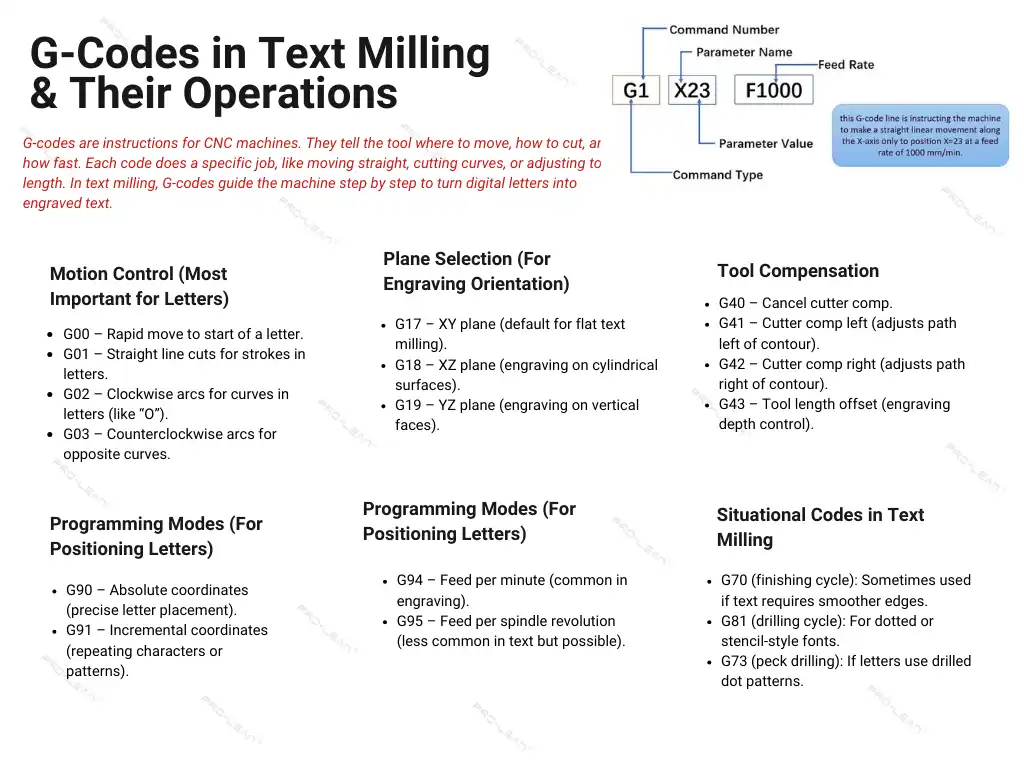
CNC G-code
A file with digital instructions is called CNC programming, which involves CNC G-code and M-code lines. The program is typically generated in CAM software.
Material Selection
Choosing the material requires several considerations. First, the mechanical & physical properties of the material should justify the application requirements. Next, also consider machinability, operational requirements, and cost.
Router Setup & Positioning
The tools and workpiece are clamped on the spindle/router and machine bed. Then, the bit is positioned at (0,0,0) with respect to the work. Meanwhile, it is also essential to choose the right type of routing tool and tool material. If the workbar is tough material, consider tools with a hard coating.
CNC Routing Process
The CNC routing process starts, strictly following the pre-set parameters and tool path. The rotating bit engages the work and removes the materials precisely.
Although the machining process is automated, you must ensure the close monitoring of the process, such as chip formation and tool wear.
Post-Processing
Once the desired shape is achieved, post-processing operations are used to enhance the finish and dimensional accuracy, such as sandblasting and polishing. Furthermore, some parts might require heat treatment, adhesive painting, or other processes.
Quality Control
Once finishing and post-treatment operations are completed, the CNC-routed parts go for quality control procedures. It involves testing different properties and verifying the dimensional accuracy. Equipment like CMM machines, micrometers, and calipers is used in these stages.
Try Prolean Now!
CNC Router Machine and Its Components
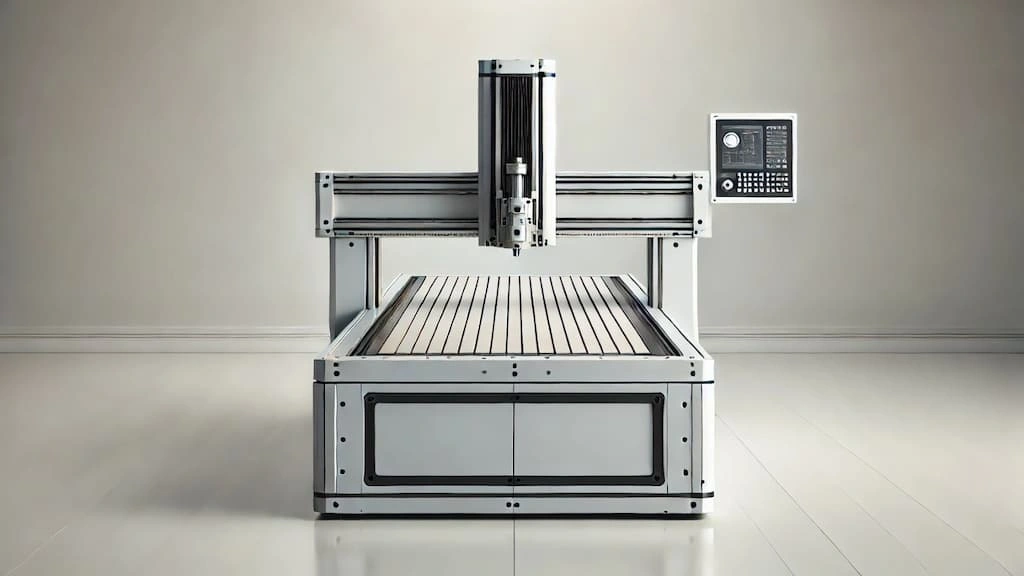
CNC router
A CNC router machine is a computer-controlled equipment used in subtractive manufacturing. It uses different types of cutting tools to shape, carve, drill, or engrave the soft materials. The tools are attached to the rotating spindle, and it moves along the stationary work to remove the material and obtain the designed shape.
The granty-style construction provided rigidity to the machine for stable operations. Consequently, there is a set of routing tools that you need to change based on the designed features. An advanced CNC router might involve an automatic mechanism for tool changing.
Let’s look at some CNC router components, including structural frame, machining bed, spinlde, steeper or servo motors, CNC controller, and cutting tools:
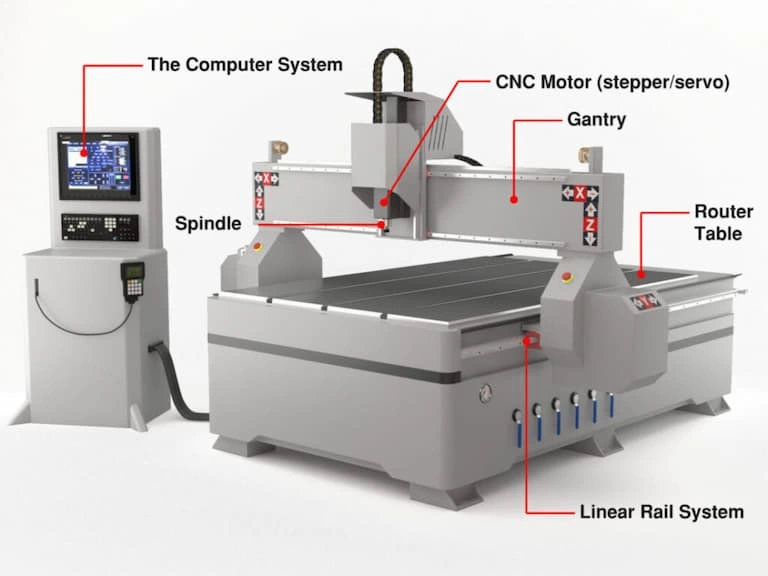
CNC router components
Structural Frame
The CNC router machine involves a gantry-style structural frame. The parts of the frames are made with high-strength steel or aluminum alloys. The main function of the frame is to provide mounting for other components, like the spindle, and withstand the cutting forces. It also damps the vibration from machining.
Machining Bed
This component clamps the workpiece and provides an area for machining. So, the machining bed refers to a flat surface with T-slots or other clamping mechanisms. In addition to secure workholding, it might also be equipped with electronic sensors to support the precise tool path movement.
Spindle
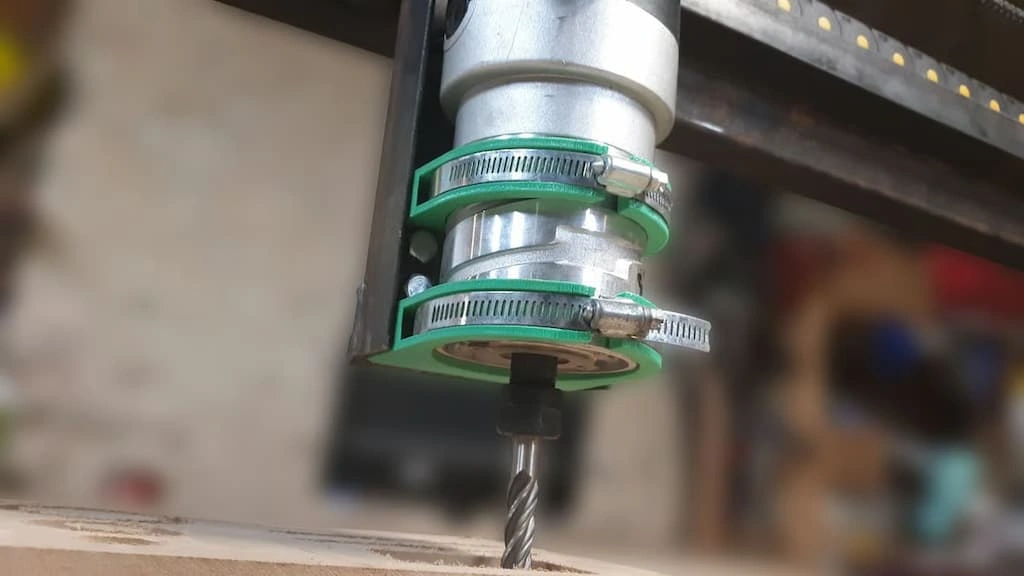
Router spindle
The spindle is the component where you attach the cutting tool in a chuck or collet. It is strong and rigid, containing rotating shafts and bearings for tool rotation, up to 10000 rpm, or even more. Consequently, the CNC system guides the connected servo motors for spindle movement along X, Y, and Z axes.
The difference between a router vs. spindle is that a router is a less rigid, consumer-grade machining, whereas a spindle is an industrial-grade motor designed for higher precision and durability.
Steeper or Servo Motors
The motors are used to facilitate the spindle or gantry movement based on CNC instructions. The CNC system controls the positioning and adjusts according to feedback. The motors can be stepper, servo, or both. The servo motors are more precise and found in industrial-grade routers, whereas stepper motors are used in hobbyist and desktop routers.
CNC Controller
It is the brain of the CNC router machine, which dictates tool path, tool movement, cutting speed, depth, and other machining variables. Consequently, it coordinates the servo motors for tool movement.
CNC controllers involve ports for the CNC program input, the drive circuit, and have the capability to interpret and act on G and M codes generated on CAM software.
Cutting Tools
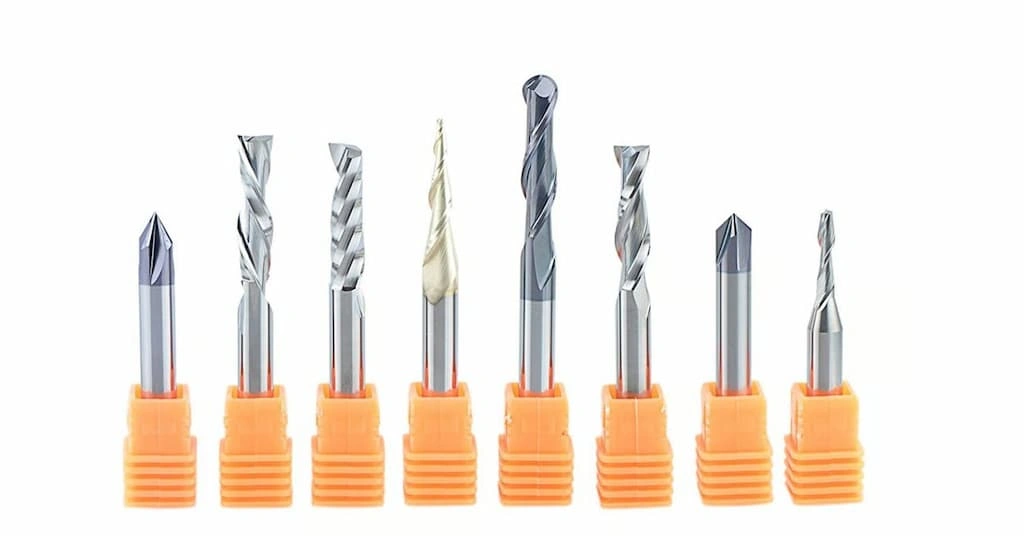
CNC Routing bits
There are several types of cutting tools used in CNC routing, each with the capability of distinct machining operations and features. The common tools for CNC routing are bass and nose bits, V-bits, compression bits, straight flute cutters, and end mill cutters.
Try Prolean Now!
Types of CNC Routers
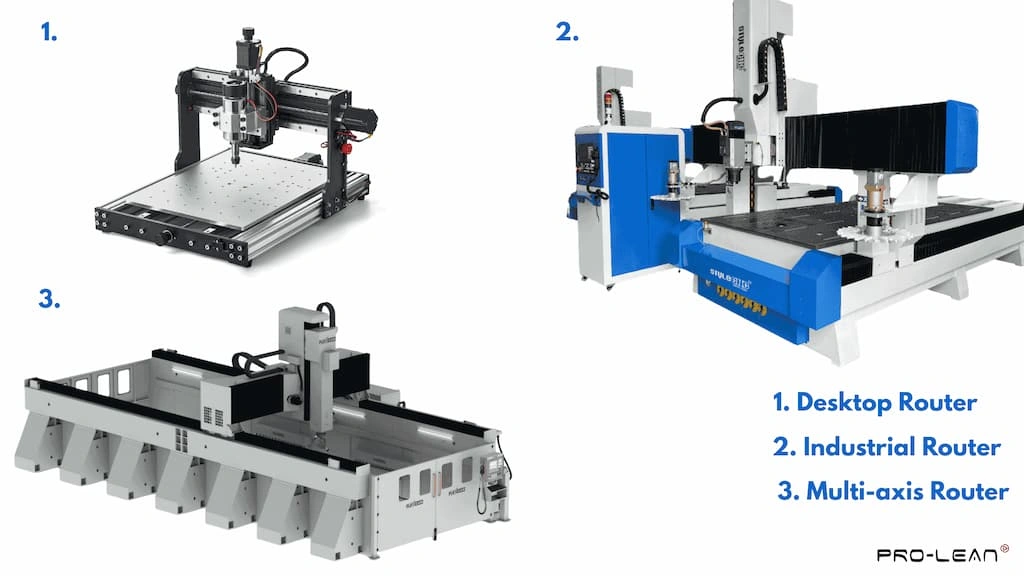
Types of CNC routers
There are different types of CNC routers available in the market based on their capabilities and the specific manufacturing purpose they serve. It includes a desktop router, an industrial router, and a multi-axis router.
Desktop Router
Desktop routers are small machines specialized for small-sized components. It can be installed in a small space or over a table. Consequently, this type of router is suitable for small-sized components, DIY projects, and hobbyists.
Industrial CNC Router
This type of router is powerful and can shape or carve large-sized components. It is used to produce accurate and industrial-grade parts for automotive, fabrication, aerospace, and other sectors. Subsequently, the industrial CNC router is also faster and works in diverse routing projects.
Multi-axis CNC Router
A multi-axis CNC router refers to a routing machine with the capability of 3, 4, or 5 axes of movement. The spindle can move across multiple axes to form the complex geometrical features. Additionally, you can perform milling, cutting, threading, drilling, engraving, and other operations in multi-axis routers.
Hobby CNC Routers
As the name suggests, these types of routers are used by hobbyists and students for DIY projects. Some small workshops might also use this for small woodworking jobs. Subsequently, they are cost-effective and come in a compact design. If you are interested in learning routing fundamentals, this type of router is the best choice.
ATC (Automatic Tool Changer) CNC Routers
These types of routers are equipped with automatic tool swap mechanics. According to the CNC codes, they can perform drilling, profiling, threading, parting-off, and other operations by simultaneously altering the tools. Additionally, ATC routers reduce the setup time and allow for complex multi-feature parts.
Nesting-Based CNC Routers
These routers tightly arrange parts on sheet material for minimal waste. They are paired with vacuum tables and optimized toolpaths. Nested routers are popular in cabinetmaking, furniture, and signage production
Which Material Can be Used in CNC Routing?
Although CNC routers are more commonly used in woodworking, they can also handle a variety of CNC machining materials, including plastics, composites, and some soft metals. The main drawback o f material compatibility is that it can not machine hard materials like hardened steel and titanium alloys.
Woods (softwoods, hardwoods, plywood)
Woods are the most popular materials in CNC routing, including soft, hard, and plywood. Hardwoods require slower feeds and sharper carbide cutters, whereas plywood and soft are machined with upcut or compression bits.
Acrylic (PMMA)

PMMA Parts
Acrylic is a bright and glass-like material. In routing, it is machined with single-flute, O-flute, or compression bits to avoid melting and reflow. Subsequently, high spindle speeds reduce the chipping and form smooth edges.
ABS
ABS is a durable thermoplastic ideal for functional prototypes and signage. Typically, sharp two-flute cutters are used for ABS routing as they offer good chip removal. On the other hand, it is important to ensure proper ventilation for fume exhaust.
Aluminum alloys
As aluminum alloys do not have high hardness, they can be routed with carbide tools. They require high spindle speed and feed rate for smooth routing. You can choose grades like 7075, 6061, and 2020, based on the required properties for your application.
Brass
Brass is generally used for decorative and precision parts. Brass routing uses sharp carbide or HSS tooling, moderate spindle speeds, and positive rake angles. As brass is heavier, it needs rigid setups to prevent vibration. Meanwhile, a minimal coolant or air blast is mandatory for chip clearance.
You can use any of the following materials in the CNC routing process:
- Hardwood
- Softwood
- Plywood
- MDF
- Acrylic
- Polycarbonate
- ABS
- Aluminum alloys
- Brass
- Foam
- Rubber
If you are further interested in CNC materials, read about different types of plastic for CNC machining here.
What Are the CNC Router Applications?
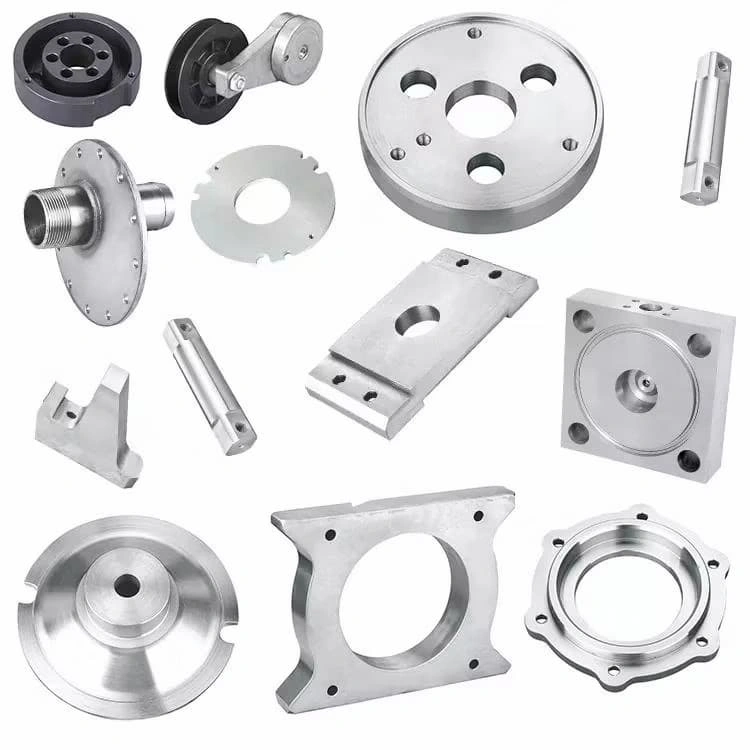
CNC routing parts
CNC routers are used to shape, cut, drill, carve, and engrave materials across various industries. They are essential in wood milling, signage, advertisement boards, sculpture making, etc.
The table below outlines the CNC router applications with examples:
| Sector | Why Use a Router? | Application Examples |
| Woodworking | Precision cuts, complex designs, reduced waste | Cabinets, furniture, moldings, wooden signs, carved panels |
| Advertising | Production speed, low cost, works on plastics/acrylic | Acrylic logos, POS displays, 3D letters, light boxes, promo plaques |
| Signages & Boards | Clean edges and consistent batches | Directional and informational signs, storefront logos, dimensional boards, channel letters |
| Automotive Parts | Prototyping, jigs/fixtures, custom patterns, and letters | Dashboards, trim panels, brackets, body molds, custom covers |
| Mold Making | Accurate molds, smooth finish | Patterns on dies and molds, injection molds, and sand casting dies. |
| Marine Industry | Large panels, repeatable 3D shapes, low cost | Deck panels, cabinetry, and interior components |
| Decorative Items | Intricate carving, custom pieces, low-cost small batches | Wall art, screens, clocks, lamp shades, ornate frames, home décor |
Besides full-scale industrial production, CNC routers are also indispensable in aesthetic and functional prototyping. It is fast and cost-effective for the rapid prototyping of consumer goods, electronics, architectural elements, and decorative products.
Advantages of CNC Routing
CNC routing offers high precision, repeatability, large machining bed, quick turnaround, and versatile tooling options. Let’s discuss these in brief.
- Lower Cost: CNC routing is less expensive than milling soft materials due to production speed and low setup cost.
- 2.5 & 3D Shapes: It can cut sheets, engrave patterns, and make 3D shapes using different types of routing tools.
- Large Machining Bed: The size of the machining bed is larger compared to CNC mills, which allows for shaping and carving large workpieces.
- Accuracy and Repeatability: CNC routers can achieve tight tolerances, down to ± 0.0025mm. Additionally, the computer control of the process produces parts with dimensional consistency.
- Faster Production: The automation in material removal and advanced automatic tool changer reduces the machine downtime, enhancing the production speed & efficiency.
- Wider Tooling Options: CNC routers have versatile tooling options to cover a wide range of complex designs.
Read more:
What are the Different CNC Routing Operations?
There are several CNC routing operations, each with a distinct material removal mechanism and the capability to create a specific feature. It includes
Let’s take a look at when they are used:
| Operation | Mechanism | Uses |
| Profiling | The tool follows the part outline (inside/outside offset) and makes a profile in multiple passes. | Cut part outlines, trim edges, sign blanks, and cabinet panels. |
| Pocketing | A bit rotates and drills through the material to create a pocket. | Internal cavities, recesses for hardware, and weight reduction |
| Drilling | Drills or plungeable endmills are used to ans they create through and blind holes. | Fastener holes, jig holes, and locating features. |
| Slotting | A narrow-bit toolpath creates slots or grooves | T-slots, wiring channels, sliding fits. |
| V-Grooving | V-bit cutsa width that varies with depth (2.5D V-carve toolpath). | Sign lettering, decorative flutes, and fold lines in sheets |
| Engraving | Small-diameter or V-bits run shallow, high-resolution passes to engrave the surface | Text, logos, fine detailing patterns |
| 3D carving | A series of X/Y/Z passes with ball-nose/tapered tools is used to generate 3D contours. | Sculptures, molds, complex surface features. |
| Facing | A wide cutter or multiple overlapping passes remove thin layers across the material surface. | Flatten spoilboards, remove coatings, and end face preparation |
| Chamfering | Angled toolpaths or V-bit passes through the edges for chamfering | Decorative edges, assembly preparation, and chamfered joints. |
What are the Tools Required in CNC Routing?
CNC routing requires three types of tools to execute the operations and prodce parts with the desired specification. cutting tools, workholding tools, and quality control tools. Each of these tools has its own role in the machining process.
Let’s further elaborate on cutting, workholding, and quality control tools.
Cutting Tools
They directly make contact with the workpiece for material removal and craft the shape you designed. Routing processes utilize cutting tools like end mills, V bits, straight cut bits, ball nose cutters, compression bits, and spiral bits.
Workholding Tools
These tools are used to secure the workplace in the machining bed and the tool on the spindle. Besides ensuring alignment and stability, their role is also critical for operator safety. Some notable workholding tools are T-slot fixtures, mechanical clamps, vices, vacuum hold-down systems, toggle clamps, step clamps, screw & bolts, and nail guns.
Quality Control Tools
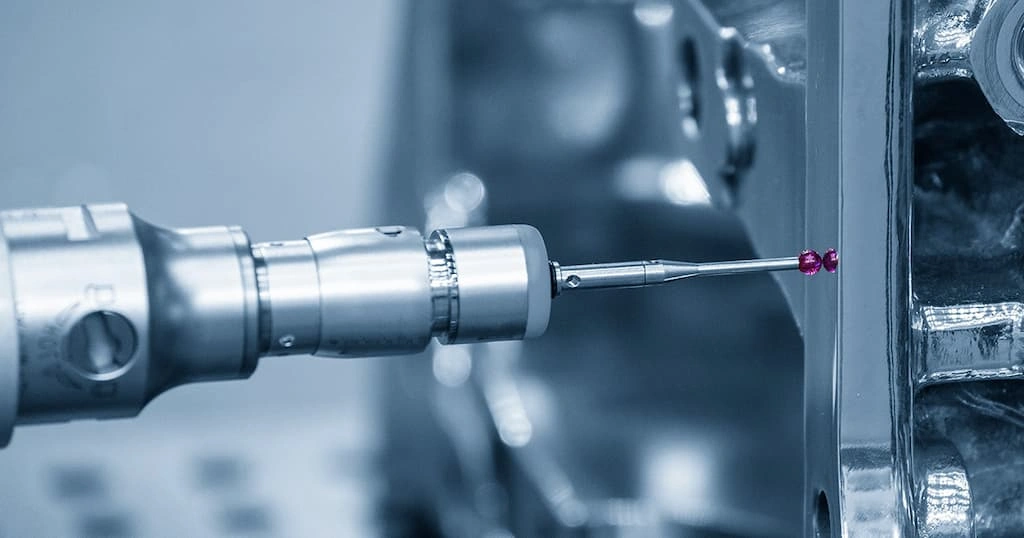
CMM probe
Quality control tools can be categorized further into two types: tools that are used before machining for calibration of setup, and those used to inspect the turned parts after machining. The role of these tools is to ensure the dimensional accuracy and overall quality of the manufactured parts.
The examples of quality control tools are dial indicators, test indicators, edge finders, touch probes, tool length setters, calibration blocks, and laser calibration systems.
Factors Influencing CNC Routing Cost
The upfront installation cost for CNC routing is relatively inexpensive; an industry-standard router costs around $200000. However, the per/par production, per/hour routing cost, or per project cost depends on different factors.
The list below outlines the common factors influencing CNC routing cost:
- The capability of the CNC router you are using, the higher the axes machines cost.
- Complex features require specialized tool path strategies, driving the cost higher.
- Material type also affects the cost. E.g., harder materials require specialized tools and also take more time than softer materials.
- If your parts need tighter precision and finer surface finish, it can also add to the cost.
- The cost also varies based on which county you are outsourcing the service from. Manufacturers in Asia and North America are generally more cost-effective.
Mistakes to Avoid in CNC Routing
Some minor deviations or process mistakes can result in defective items and complete failure. So, there are some mistakes you must avoid in CNC routing, such as choosing the right feed, tool type, loose clamping, and regular maintenance.
- Incorrect Feed & Speed: Be aware of the correct feed rates and spindle speed based on the work material and the turning operation you are performing.
- Wrong Tool Type: You must choose the right tool; otherwise, it will lead to inaccuracy and tool wear.
- Setup & Alignment: Secure the workpiece with the right clamping force; loose clamping causes deflection, and tight clamping can damage the work material surface.
- Ignoring Calibration: Use equipment and tools to calibrate the setup and quality of CNC turned parts.
- Irregular Maintenance: Do not neglect the periodic and preventive maintenance of CNC turning machines.
Average Time Span of CNC Routing
The time span of CNC routing ranges from a few minutes to 12 hours. If you are making a simple 2D profile, it might be done within 10 minutes in a multi-axis router, whereas it might take several hours to carve a large & complex design.
Common factors influencing the time span of CNC routing are work material type, intricate features in design, type of CNC router used, machine downtime, tool path complexity, and cutting depth.
CNC Routing Vs Milling
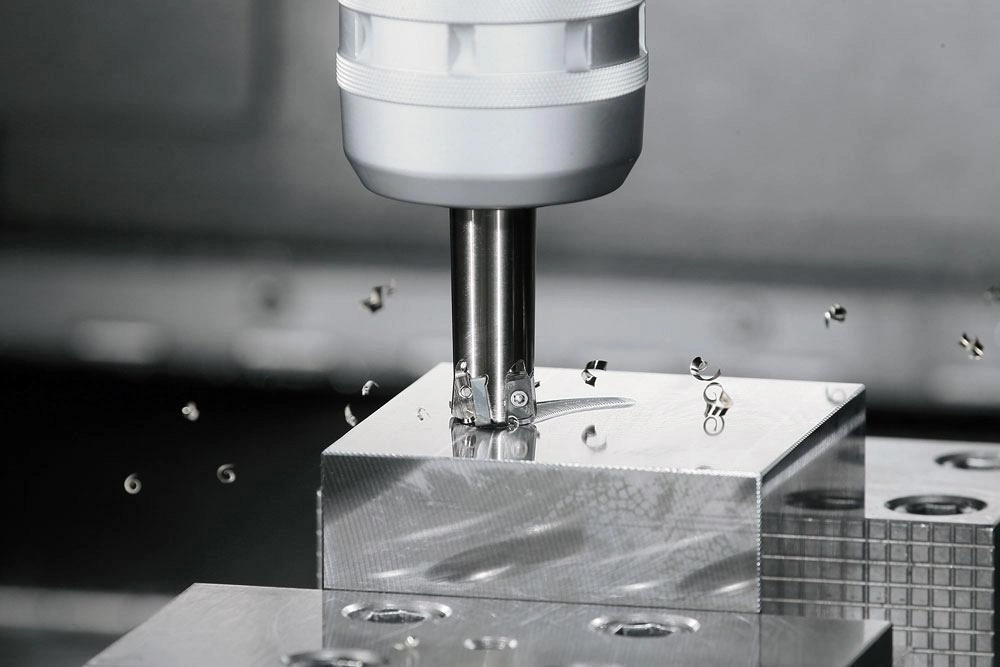
CNC Milling process
CNC routing and milling serve overlapping but distinct roles. Routers prioritize high spindle RPM, large beds, and rapid material removal for softer materials. On the other hand, milling provides high rigidity, torque, and allows flexible Z-axis travel.
Let’s look at the comparison table for the major routing vs milling differences:
| Feature | CNC Router | CNC Mill |
| Materials | Soft materials: wood, plastics, foam, aluminum | Soft and hard materials |
| Structure Rigidity | Lighter gantry, less rigid | Heavy, rigid frame, high cutting forces |
| Spindle | High RPM, lower torque | Lower RPM, high torque |
| Tolerance | Moderate level tolerances | High, micron-level possible |
| Applications | Signage, furniture, panels, decorative inlays | Precision molds, aerospace & medical parts, prototypes |
Versatile CNC Machining Services at ProleanTech
Are you looking for a manufacturer to outsource CNC-machined parts? If yes, ProleanTech can be a go-to option for you. With over a decade of experience in manufacturing, we offer versatile CNC machining services, including CNC routing, milling, and turning.
We handle different materials to transfer the design into physical form, meeting all of your requirements. Additionally, we are flexible in production volume. Whether you need a few prototypes or full-scale routing manufacturing, we can meet your deadlines. So, upload your design, and get a quote today.
Conclusion
CNC Turning is a versatile manufacturing process that can be used to shape, cut, carve, and engrave soft materials. This computer-controlled process can offer excellent accuracy and consistency. However, optimizing the technical drawing & machining parameters, and choosing the right type of tool is essential to leverage the full capability of CNC routers.
If you want further information and consultations regarding your CNC routing project, contact us now. Our industry experts can help you achieve the desired results.
FAQ
How does CNC routing work?
CNC Turning uses rotating tools to remove material controlled by a CNC program. The spindle moves along the X, Y, and Z axes and follows the tool path until the desired part/product is achieved.
What is the difference between CNC milling and CNC routing?
The main difference between CNC Milling and routing is the materials they can process. Milling can work with hard materials, whereas routing is for wood, plastics, and soft metals.
How long does CNC routing take?
CNC routing is a fast machining process. But the exact time depends on size, design complexity, material type, desired accuracy, and finish quality.

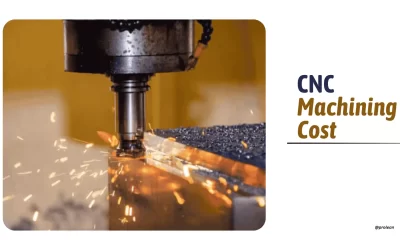
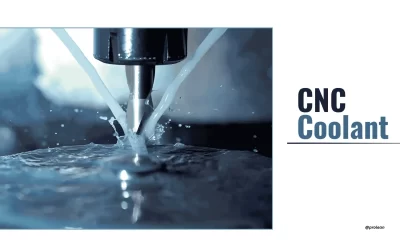
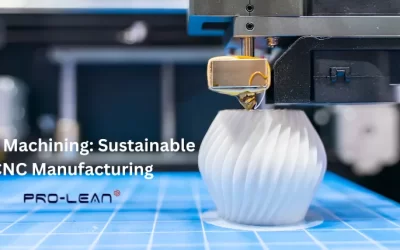
0 Comments